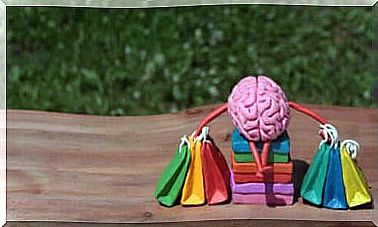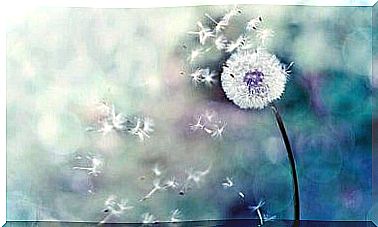5 Tips For Carrying Out A Liberating Introspection Process

Broadly speaking, introspection is defined as the ability to observe, respond to, and connect with our inner world. This process is carried out to increase our level of awareness about who we are and what we want. A liberating introspection process is also one that allows us to identify the obstacles that stand in the way of our personal evolution.
The current surroundings are, for the most part, quite alienating. They disconnect us from ourselves and urge us to look only outside, outside. They also try to impose a way of being and desiring, which does not necessarily coincide with what we truly are. This leads to passive adaptation or constant malaise.
It is important to introduce into our lives the space needed to make a process of introspection. Few things are needed: enough time, adequate space, and especially the genuine desire to navigate our inner world. Here is some advice to help with this process:
Recommendations for carrying out an introspection process
1. Prepare the proper framing
The proper setting for introspection involves choosing a suitable time and place. The moment is when you are in no hurry and know that no one is going to interrupt.

The place is an environment where you feel comfortable. If you have access to a secluded place where there is little noise, so much the better. In any case, the essential thing is to have the interest and willingness to make a productive introspection.
2. Examine the past
The best way to begin a liberating introspection process is to explore the past. If what you want to do is a punctual review, you should start with the immediate past. If you intend to carry out deep introspection, there are no limits.
It is advisable that you ask basic questions: What have been my most frequent mistakes? Under what circumstances did I manage to achieve my goals? Are the goals I achieved satisfactory? Under what circumstances did I feel I had character flaws?
3. Identify the voids
A very important part of introspection is identifying the voids. These gaps include unmet needs, lack of answers to relevant questions, and difficulties in setting goals in some sphere of life.

It is important to analyze which of these needs cause more pain, dissatisfaction or anguish. View the big picture and consider whether there are any point solutions to employ. If not, then focus on the gaps that are easier to resolve.
4. Specify errors of different natures
In this part, we must make use of self-criticism in a constructive way. It’s about identifying the obstacles that keep you from filling your voids and leading a more satisfying life. These obstacles can be mental, emotional, or they can also be influenced by something external.
The essential thing is that you don’t blame yourself, but that you maintain an understanding attitude towards yourself. You’re not judging yourself by evaluating your mistakes, you’re identifying the barriers that keep you from progressing.
At this point, you need to specify whether there are feelings of guilt, overt or hidden, that often plague you. Also if you carry any unresolved irritation with some person or situation. Or if there is some fear that you have not been able to overcome, however much you have set out to do it. The result of this analysis is definitive for the introspection process to be really liberating.
5. Recognize strengths and set goals
The real goal of an introspection process is to renew one or more areas of your life. So the final step is to recognize the forces for change that exist within you. The first one is the interest that drives him to carry out this entire process. The question you should ask is: What factors in my personality are my greatest strengths? How can these forces help me change the “x” aspect?

This implicitly leads to goal setting. Ideally, they shouldn’t be too many. Preferably just one, with all the little goals that entails. It all depends on how motivated you feel. In any case, one must end liberating introspection for the purpose of change.
It is advisable that we carry out an introspection process periodically. The first time it may seem a little strange, but as you practice it becomes a lot easier. These are spaces dedicated to oneself that, from time to time, it is necessary to open.









